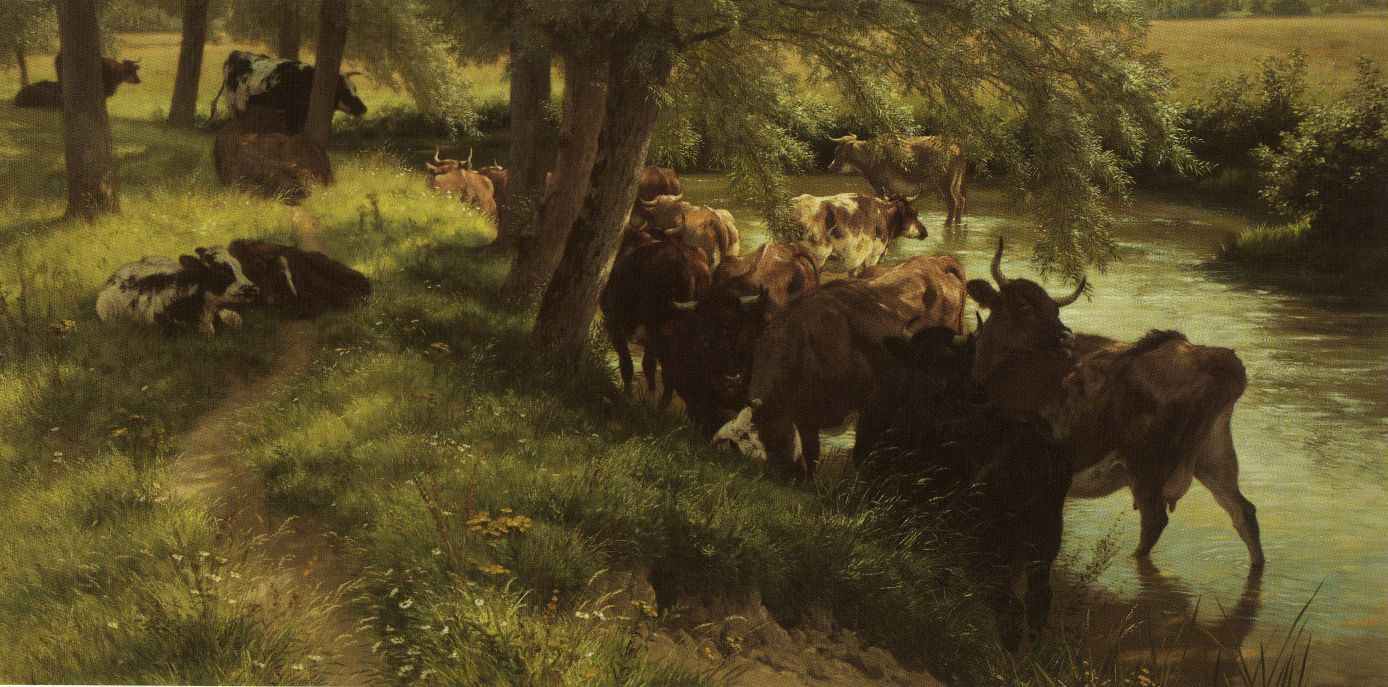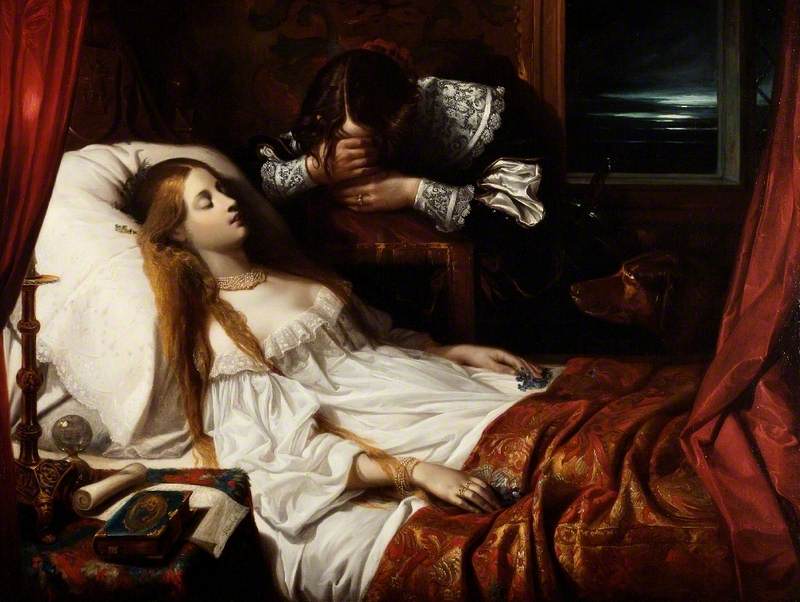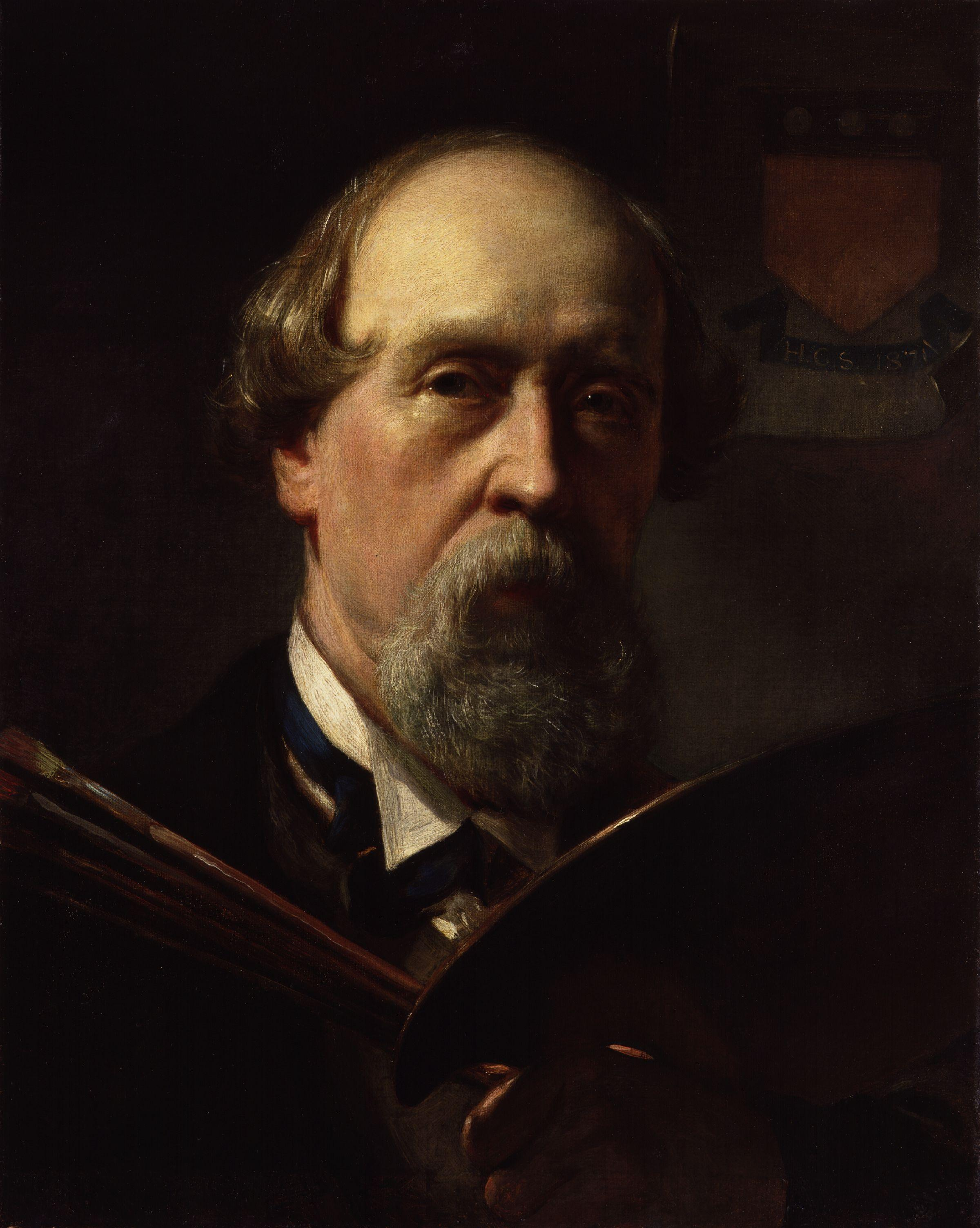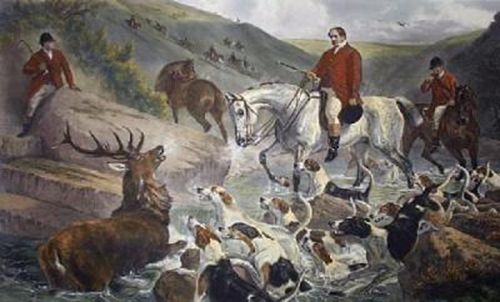|
Charles George Lewis
Charles George Lewis (13 June 1808 – 16 June 1880) was a British printmaker. Life The second son of Frederick Christian Lewis, and brother of John Frederick Lewis, he was born in Enfield, Middlesex. He was instructed in drawing and engraving by his father. Lewis retired in about 1877, and died suddenly from apoplexy at his residence at Felpham, near Bognor, on 16 June 1880. He was buried in Felpham churchyard. Works Lewis had a facility in etching, and in combining line engraving, stipple, and mezzotint. Many of his best-known plates were after the works of Sir Edwin Landseer. The earliest of these was ''Hafed'', published in 1837. Besides these were smaller plates after works of Landseer, most of which had previously been engraved by Thomas Landseer and others. His etchings after Landseer began with ''To-ho!'' published in 1830, and included the set of eight plates of ''The Mothers''. Lewis engraved also some plates after Rosa Bonheur.''Bouricairos crossing the Pyre ... [...More Info...] [...Related Items...] OR: [Wikipedia] [Google] [Baidu] |
Frederick Christian Lewis
Frederick Christian Lewis (1779–1856) was an English etcher, aquatint and stipple engraver, landscape and portrait painter and the brother of Charles Lewis (1786–1836). Life He studied under J. C. Stadler and in the schools of the Royal Academy and aquatinted most of Thomas Girtin's etchings of Paris, 1803. He made transcripts of drawings by the Old masters for William Young Ottley's ''Italian School of Design'' 1808-12 and executed plates for the publisher John Chamberlaine's ''Original Designs of the most celebrated Masters in the Royal Collection'', 1812. He engraved Sir Thomas Lawrence's crayon portraits and was engraver of drawings to Princess Charlotte, Prince Leopold, George IV, William IV, and Queen Victoria. He also painted landscapes, mainly of Devonshire scenery and published several volumes of plates depicting the Devonshire rivers between 1821 and 1843, as well as etchings of the ''Scenery of the Rivers of England and Wales'' 1845–7. Lewis transformed num ... [...More Info...] [...Related Items...] OR: [Wikipedia] [Google] [Baidu] |
Frederick Tayler
Frederick Ernest Tayler (18 July 1889 – 30 April 1954) was an English cricketer who played for Warwickshire in 1910 and Gloucestershire in 1911 as a right-handed batsman. He was born at Cold Aston Cold Aston (also known as Aston Blank) is a village and civil parish in Gloucestershire, England, approximately to the east of Gloucester. It lies in the Cotswolds, an Area of Outstanding Natural Beauty. In the 2011 census, the population was ..., Gloucestershire (sometimes called Aston Blank) and died there as well. References {{DEFAULTSORT:Tayler, Frederick 1889 births 1954 deaths English cricketers English cricketers of 1890 to 1918 Gloucestershire cricketers Warwickshire cricketers ... [...More Info...] [...Related Items...] OR: [Wikipedia] [Google] [Baidu] |
1880 Deaths
Year 188 (CLXXXVIII) was a leap year starting on Monday of the Julian calendar. At the time, it was known in the Roman Empire as the Year of the Consulship of Fuscianus and Silanus (or, less frequently, year 941 ''Ab urbe condita''). The denomination 188 for this year has been used since the early medieval period, when the Anno Domini calendar era became the prevalent method in Europe for naming years. Events By place Roman Empire * Publius Helvius Pertinax becomes pro-consul of Africa from 188 to 189. Japan * Queen Himiko (or Shingi Waō) begins her reign in Japan (until 248). Births * April 4 – Caracalla (or Antoninus), Roman emperor (d. 217) * Lu Ji (or Gongji), Chinese official and politician (d. 219) * Sun Shao, Chinese general of the Eastern Wu state (d. 241) Deaths * March 17 – Julian, pope and patriarch of Alexandria * Fa Zhen (or Gaoqing), Chinese scholar (b. AD 100) * Lucius Antistius Burrus, Roman politician (executed) * Ma Xiang, Ch ... [...More Info...] [...Related Items...] OR: [Wikipedia] [Google] [Baidu] |
1808 Births
Eighteen or 18 may refer to: * 18 (number), the natural number following 17 and preceding 19 * one of the years 18 BC, AD 18, 1918, 2018 Film, television and entertainment * ''18'' (film), a 1993 Taiwanese experimental film based on the short story ''God's Dice'' * ''Eighteen'' (film), a 2005 Canadian dramatic feature film * 18 (British Board of Film Classification), a film rating in the United Kingdom, also used in Ireland by the Irish Film Classification Office * 18 (''Dragon Ball''), a character in the ''Dragon Ball'' franchise * "Eighteen", a 2006 episode of the animated television series '' 12 oz. Mouse'' Music Albums * ''18'' (Moby album), 2002 * ''18'' (Nana Kitade album), 2005 * '' 18...'', 2009 debut album by G.E.M. Songs * "18" (5 Seconds of Summer song), from their 2014 eponymous debut album * "18" (One Direction song), from their 2014 studio album ''Four'' * "18", by Anarbor from their 2013 studio album ''Burnout'' * "I'm Eighteen", by Alice Cooper comm ... [...More Info...] [...Related Items...] OR: [Wikipedia] [Google] [Baidu] |
Thomas Jones Barker
Thomas Jones Barker (19 April 1813 – 29 March 1882) was an English historical, military, and portrait painter. The Barkers of Bath Thomas Jones Barker was born at Bath in 1815, into a family of artists. His grandfather, Benjamin Barker, was "a failed barrister…who painted horses with limited success" and eventually became "foreman and enamel painter at the japan works, Pontypool, expert at painting sporting and animal figures." His father was the prominent painter Thomas Barker, also called Barker of Bath. His uncles Benjamin Barker, Jr., and Joseph Barker were also painters, as was his younger brother, John Joseph Barker, and his cousin, Marianne A. Barker, daughter of his uncle Benjamin. Career in France After studying under his father, in 1834, at age 19, he moved to Paris and became a student of Horace Vernet. He made his debut at the Paris Salon of 1836 with three paintings, including ''Beauties of the Court of Charles II'', which received a bronze medal. (His fat ... [...More Info...] [...Related Items...] OR: [Wikipedia] [Google] [Baidu] |
Richard Beavis
Richard is a male given name. It originates, via Old French, from Old Frankish and is a compound of the words descending from Proto-Germanic ''*rīk-'' 'ruler, leader, king' and ''*hardu-'' 'strong, brave, hardy', and it therefore means 'strong in rule'. Nicknames include "Richie", "Dick", "Dickon", " Dickie", " Rich", " Rick", " Rico", "Ricky", and more. Richard is a common English, German and French male name. It's also used in many more languages, particularly Germanic, such as Norwegian, Danish, Swedish, Icelandic, and Dutch, as well as other languages including Irish, Scottish, Welsh and Finnish. Richard is cognate with variants of the name in other European languages, such as the Swedish "Rickard", the Catalan "Ricard" and the Italian "Riccardo", among others (see comprehensive variant list below). People named Richard Multiple people with the same name * Richard Andersen (other) * Richard Anderson (other) * Richard Cartwright (other) ... [...More Info...] [...Related Items...] OR: [Wikipedia] [Google] [Baidu] |
Henry William Banks Davis
Henry William Banks Davis (18331 December 1914) was a popular English landscape and animal painter, noted for his pastoral scenes, often populated with cattle and other farm animals. Life and works He studied and exhibited at the Royal Academy, becoming an associate in 1873 and Royal Academician in 1877, and where he was awarded two silver medals. Early works were influenced by the Pre-Raphaelites but he later evolved a more individual style and worked on a larger scale. He achieved popularity and his art commanded high prices during his lifetime. (Christie's). Paintings  ...
...
[...More Info...] [...Related Items...] OR: [Wikipedia] [Google] [Baidu] |
William Powell Frith
William Powell Frith (9 January 1819 – 2 November 1909) was an English painter specialising in genre subjects and panoramic narrative works of life in the Victorian era. He was elected to the Royal Academy in 1853, presenting ''The Sleeping Model'' as his Diploma work. He has been described as the "greatest British painter of the social scene since Hogarth". Early life William Powell Frith was born in Aldfield, near Ripon in the then West Riding of Yorkshire on 9 January 1819. He had originally intended to be an auctioneer. Frith was encouraged to take up art by his father, a hotelier in Harrogate. Frith was great uncle and an advisor to the English school portrait painter Henry Keyworth Raine (1872–1932). He moved to London in 1835 where he began his formal art studies at Sass's Academy in Charlotte Street, before attending the Royal Academy Schools. Frith started his career as a portrait painter and first exhibited at the British Institution in 1838. In the 1840s ... [...More Info...] [...Related Items...] OR: [Wikipedia] [Google] [Baidu] |
Henry Courtney Selous
Henry Courtney Selous (b. Panton Street, Haymarket, London 1803; d. Beaworthy, Devon, 24 September 1890) was an English painter, illustrator and lithographer. Life He was the son of Gideon "George" Slous (1777–1839), a Flemish portrait and miniature painter, and a pupil of John Martin who was an important and influential English painter of the 19th century. He was an occupant of Keats House in Hampstead, from 1835 to 1838. Selous had two brothers, Frederick Lokes Slous (the father of Frederick Courteney Selous) and Angiolo Robson Slous, a playwright who wrote ''True to the Core: A Story of the Armada'' and whose daughter Alice married the novelist Morley Roberts. He married on 4 March 1837 Emily Elizabeth (d. 1879), daughter of the successful miniature painter Henry Pierce Boneat at St Pancras Parish Church and they had four daughters. He died on the 24th September 1890 and was buried on the eastern side of Highgate Cemetery. Career In 1818 Selous entered the Royal ... [...More Info...] [...Related Items...] OR: [Wikipedia] [Google] [Baidu] |
Samuel Carter (artist)
Samuel John Carter (March 1835 – 1 May 1892) was a British artist and illustrator, known for his paintings and drawings of animals. He was the father of the archaeologist Howard Carter. Life Carter was born in March 1835 at Swaffham, Norfolk, the son of Samuel Isaac Carter, a gamekeeper. As a child Carter took lessons from John Sell Cotman who ran a school of drawing in Swaffham. Basing himself in London and Swaffham, Carter established himself as an animal painter, including wildlife and hunting scenes, and was the principal animal illustrator for the '' Illustrated London News'' from 1867 to 1889. He also worked as an animal portrait painter in his Norfolk locale, including obtaining commissions to paint clients' horses and dogs. Exhibiting regularly at the Royal Academy, he drew positive comment from John Ruskin. In 1858, at the age of 22, Carter married Martha Joyce (c. 1836–1920) at Swaffham. They had 11 children: ten sons and a daughter, with three sons dying in inf ... [...More Info...] [...Related Items...] OR: [Wikipedia] [Google] [Baidu] |
Richard Ansdell
Richard Ansdell (11 May 1815 – 20 April 1885) was a British painter of animals and genre scenes. Life Ansdell was born in Liverpool (then in Lancashire), the son of Thomas Griffiths Ansdell, a freeman who worked at the port, and Anne Jackson. His father died young; Richard was educated at The Liverpool Blue Coat school for orphans. He had a natural talent for art from an early age, and after leaving school worked for a portrait painter in Chatham in Kent, and also spent time as a sign painter in the Netherlands. He first exhibited at the Liverpool Academy in 1835, becoming a student there the following year. His animal and rural subjects proved to be popular and he soon attracted wealthy patrons. His first exhibition at the Royal Academy, London, was in 1840, with two paintings called "Grouse shooting" and "A Galloway farm". This was followed, in 1841 by "The Earl of Sefton and party returning from hunting", in 1842 "The death of Sir William Lambton at the Battle ... [...More Info...] [...Related Items...] OR: [Wikipedia] [Google] [Baidu] |
William Evans Of Eton
William Evans (1798–1877) was an English water-colour painter. Life Evans was born at Eton on 4 December 1798, was son of Samuel Evans, a landscape-painter originally from Flintshire, who had settled at Windsor. Samuel Evans he was selected to teach drawing to the daughters of George III, and eventually became drawing-master at Eton College. There are some views of North Wales and Windsor by him which have been engraved. He left Eton about 1818 for Droxford, Hampshire, where he died in about 1835. William Evans was educated at Eton, and originally studied medicine, but eventually turned to art, and became a pupil of William Collins, R.A.. In 1818 Dr. Keate appointed him drawing-master at Eton in his father's place. He was elected an associate of the Old Society of Painters in Water-colours on 11 February 1828, in which year he exhibited drawings of Windsor, Eton, Thames fishermen, Barmouth, and Llanberis, and on 7 June 1830 he was elected a member of the society. He continue ... [...More Info...] [...Related Items...] OR: [Wikipedia] [Google] [Baidu] |






